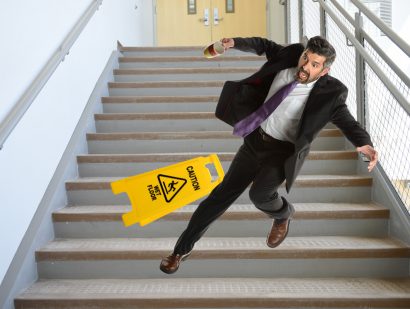- Find A Medical Provider
- Auto Injuries
- Common Injuries
- Medical/Pharmaceutical
- Types of Medical Injuries
- Malpractice Injuries
- Drug and Medical Device Injuries
- Drugs and Devices Linked to Cancer
- Opioid Addiction
- Drugs and Devices Known to Cause Injury
- 3M Combat Arms Earplugs – Hearing Loss
- Accutane
- Aciphex
- Actonel
- Actos
- Adderall and Ritalin
- Advair
- Aldara (Imiquimod)
- Alli
- Ambien
- Amiodarone
- Anzemet
- Aptivus
- Aranesp
- Arava
- Atorvastatin
- Avandia
- Benicar
- Birth Control Medication
- Blood Thinners
- Essure
- Fosamax (Alendronate Sodium)
- Gadolinium-Based MRI Contrast Agents
- Granuflo
- Hernia or Surgical Mesh Injuries
- Hydroxycut
- Inferior Vena Cava Filters
- Invokana Toe and Foot Amputations
- Ketek
- Levaquin
- Lipitor
- Mirapex
- Neurontin
- Onglyza
- Over-the-Counter Medications
- OxyContin
- Paxil
- Power Morcellators
- Pradaxa
- Propecia
- Reglan
- Talc Powder
- Trasylol
- Valsartan
- Viagra
- Xolair
- Zelnorm
- Zoloft
- Work Injuries
- Sports Injuries
- Marketing Services
- Blog
List your practice on InjuredCare | Log in / Sign up
TMJ

The jaw joint, called the temporomandibular joint (more commonly known as TMJ), is critical to our ability to bite, chew and swallow food, to speak and to make facial expressions. Each side of the head has a temporomandibular joint. Located just in front of the ears, the joints connect the lower jaw bone to the skull. The term "TMJ" also refers to a range of disorders and symptoms that affect the jaw and surrounding tissues. These disorders limit jaw movement and can cause significant pain.
According to the National Institute of Dental and Craniofacial Research, more than 10 million Americans suffer from TMJ-related problems. TMJ affects both men and women; however, women in their childbearing years make up the majority of patients who seek treatment.
What Causes TMJ?
The exact cause of TMJ is not known, but physical and emotional stress on structures around the jaw joint contribute to the disorder. Because it's more common in women than in men, scientists believe hormones play a role. Other possible factors are injuries to the jaw and surrounding area, clenching or grinding the teeth, arthritis, dental procedures, and infections.
Symptoms of TMJ
The most common symptom of TMJ is dull, aching face pain that focuses in the jaw joint, ear and/or surrounding area. The pain possibly will come and go. According to both the National Institutes of Health and the TMJ Association, additional symptoms of TMJ include:
- discomfort when biting or chewing;
- earache or ringing in the ears;
- jaw pain or tenderness;
- difficulty comfortably opening the mouth;
- clicking, popping or grating sounds in the jaw joint;
- locking of the jaw when attempting to open the mouth;
- headaches;
- a bite that feels uncomfortable or "off";
- neck, shoulder and back pain;
- swelling on the side of the face;
- decreased hearing ability;
- dizziness and vision problems.
Many of these symptoms resolve on their own within a few weeks. Pain that is severe and that lasts for more than several weeks should be discussed with a health care provider.
Diagnosing TMJ
Many of the symptoms are the same as those of other illnesses. Facial pain, for example, is a common symptom of not only TMJ but also ear and sinus infections and headaches. In order to diagnose TMJ, other medical conditions must be ruled out.
No test can accurately diagnose TMJ conditions. Physicians must conduct a medical evaluation, which might include a history of symptoms and an examination of the head, neck, face and jaw. An MRI and X-rays can identify any abnormalities in the jaw area.
It is not uncommon for someone suffering from TMJ to see a variety of health care providers, including primary care providers; neurologists; chiropractors; ear, nose and throat specialists; and dentists, in an effort to identify the cause of his or her symptoms.
Treating TMJ
In most cases, the pain and discomfort from TMJ will go away on its own. Simple self-care practices often are effective in easing symptoms.
According to the National Institute of Dental and Craniofacial Research, more studies are needed on the safety and effectiveness of most treatments for jaw joint and muscle disorders. As a result, only the most conservative, reversible treatments are recommended, even for patients with the most-persistent cases of TMJ.
- Self-Care Practices: Eating soft foods, applying ice packs, avoiding extreme jaw movements (yawning, loud singing, chewing gum), reducing stress, and practicing both gentle jaw stretching and relaxing exercises can help increase jaw movement.
- Pain Medications: Over-the-counter pain medicines or non-steroidal anti-inflammatory drugs can help relieve pain temporarily and reduce swelling in the jaw. Prescription pain or anti-inflammatory medications, muscle relaxants, or anti-depressants might be necessary for severe pain.
- Stabilization Splints: The most widely used treatment for TMJ is a stabilization splint or bite guard. This device is a plastic guard that fits over the upper or lower teeth and should be used only for short periods. The use of a bite guard should be stopped immediately if it causes pain. Studies about the effectiveness of bite guards in providing pain relief have been inconclusive.
- Surgery and Other Treatments: If a mouth guard is not effective, orthodontics can be helpful by realigning the teeth. Generally, however, non-reversible treatments that permanently alter the bite are discouraged for TMJ; they cannot be reversed. No long-term clinical trials have studies the safety and efficacy of surgical treatments for TMJ disorders.
Source Information
MedlinePlus. "TMJ disorders." National Library of Medicine and National Institutes of Health (accessed Aug. 17, 2017).
National Institute of Dental and Craniofacial Research. "TMJ Disorders." April 2015.
The TMJ Association. "TMD Basics" TMJ.org (accessed Aug. 17, 2017).









